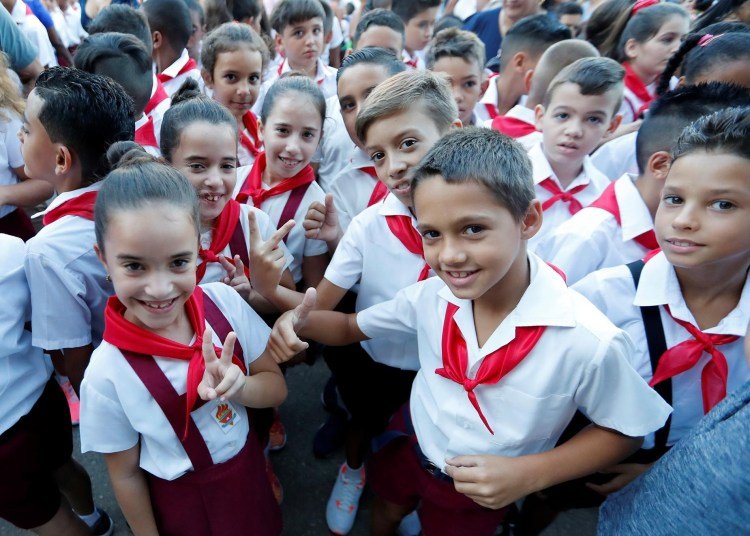Cuba opened the 2019-2020 school year this Monday with almost 2 million students in all educational centers and a respite in the teacher deficit by incorporating some 9,000 new educators to the classrooms, after the salary increase applied since last June for the island’s public sector workers.
Enrollment in the more than 10,700 elementary, intermediate and higher intermediate education centers is more than 1.7 million students, with more than 162,000 teachers for a 95% coverage, according to data provided by the sector’s authorities.
The Cuban system of free education for years has had a deficit of teachers who, demotivated by low wages and lack of benefits, have opted for retirement or exodus to the emerging private sector, where employees receive higher salaries and convertible pesos , the “hard currency” of the two circulating in Cuba.
The Ministry of Education (MINED) indicated during the preparation of this academic year that it would have about 5,813 new teachers, in addition to 3,810 students of the last year of university pedagogical careers who will carry out full-time internships in schools where they are expected to work after their graduation.

The vast majority of the reinstated teachers are retired professionals who, in addition to continuing to receive their pensions, now benefit from the new payment system, whereby the minimum monthly salaries will rise from 225 Cuban pesos (equivalent to about 9.3 dollars) to 400 (16.6 dollars).
After the salary increase, out of the 4,479 teachers who had requested leaving the sector, more than 2,200 have chosen to continue in teaching, and of the 1,858 who had requested retirement, 1,047 have decided not to, while 6,191 not linked to the sector have requested reintegration, which is a more favorable situation than in previous years, according to MINED’s assessments.
In higher education, today 250,000 students started the school year in 50 Cuban universities with a faculty of about 32,000 professors.
This year, the higher education centers foresee locating young people in the future center that will employ them during the last year of their career, a process that will begin in September and will conclude on October 15, executives of the Ministry of Higher Education (MES) explained.
This measure, according to the MES undergraduate director, Reynaldo Velázquez, will allow future university graduates to become familiar with the entities, carry out curricular and extracurricular activities, in addition to the diploma thesis, based on that agency’s actual demand.

Since 1959 and to date, the higher education centers in Cuba have graduated almost 1.5 million professionals, and according to that official figure the country has about 12% of the population and 22% of the workers with university level
Compared to economic inefficiency, the shortage of products and other common problems in Cuba, the island considers universal and free access to education and health as two of the main pillars of the Revolution that triumphed in 1959, although economic problems have also had an impact on these sectors.










